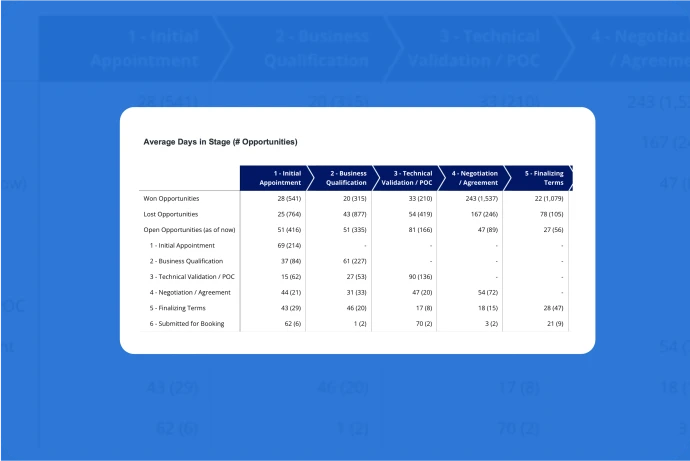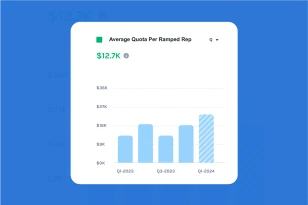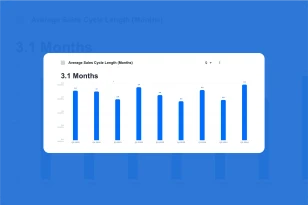What is Average Days in Stage?
“Average Days in Stage” measures the average number of days a sales opportunity or lead remains in a specific stage of the sales process. It reflects the efficiency and effectiveness of moving leads / deals through the various stages of the funnel. You’ll want to track this metric for all stages in your marketing funnel and sales funnel.
Why is it Important to Monitor Average Days in Stage?
Average Days in Stage is a crucial metric for several reasons:
- Sales Efficiency: It provides insights into the efficiency of the sales process. Longer average days in a stage can indicate bottlenecks, delays, or inefficiencies that need to be addressed.
- Sales Forecasting: Understanding the time it takes for leads to progress through each stage allows for more accurate sales forecasting and revenue predictions.
- Customer Experience: A protracted sales process can lead to frustration for potential customers. Reducing the average time in stages can improve the customer experience and increase the likelihood of closing deals.
- Pipeline Management: It helps in managing the sales pipeline more effectively. Identifying stages where leads tend to get stuck can lead to better decision-making and resource allocation.
How do you Calculate Average Days in Stage?
Below is the calculation for Average Days in Stage:
Days in Stage Formula
(Sum of Days in Stage For All Opportunities in Stage) / (Count of Opportunities in Stage)
How do you Improve Average Days in Stage?
Enhancing Average Days in Stage involves optimizing the sales and marketing processes to reduce delays and streamline lead progression. Here are some approaches to improve this metric:
- Process Optimization: Review and streamline your sales and marketing processes. Identify bottlenecks, redundant steps, or areas where leads tend to get stuck. Eliminate unnecessary delays.
- Sales Training: Provide training to the sales team to improve efficiency in lead management. Equip them with the skills and tools needed to move leads through the stages more swiftly.
- Clear Criteria: Define clear and specific criteria for advancing leads to the next stage. Ensure that sales and marketing teams have a shared understanding of when a lead is ready to progress.
- Automation and Technology: Implement sales automation and CRM systems that can automate routine tasks, track lead progress, and trigger alerts for follow-ups. Automation can reduce manual delays.
- Lead Scoring: Implement lead scoring to prioritize leads and focus resources on the most promising opportunities. This can help shorten the time leads spend in early stages.
- Communication and Collaboration: Encourage open communication between sales and marketing teams. Collaboration can lead to more effective lead handoffs and smoother transitions between stages.
- Feedback and Analysis: Regularly review data and feedback to identify areas for improvement. Analyze where leads are getting stuck and take corrective action.
- A/B Testing: Conduct A/B testing of sales and marketing strategies to identify which approaches lead to faster progression. Experiment with different tactics and measure the results.
By implementing these strategies and closely monitoring Average Days in Stage for all funnel stages, a SaaS company can optimize its sales and marketing processes, shorten the sales cycle, and improve the efficiency of lead progression.




